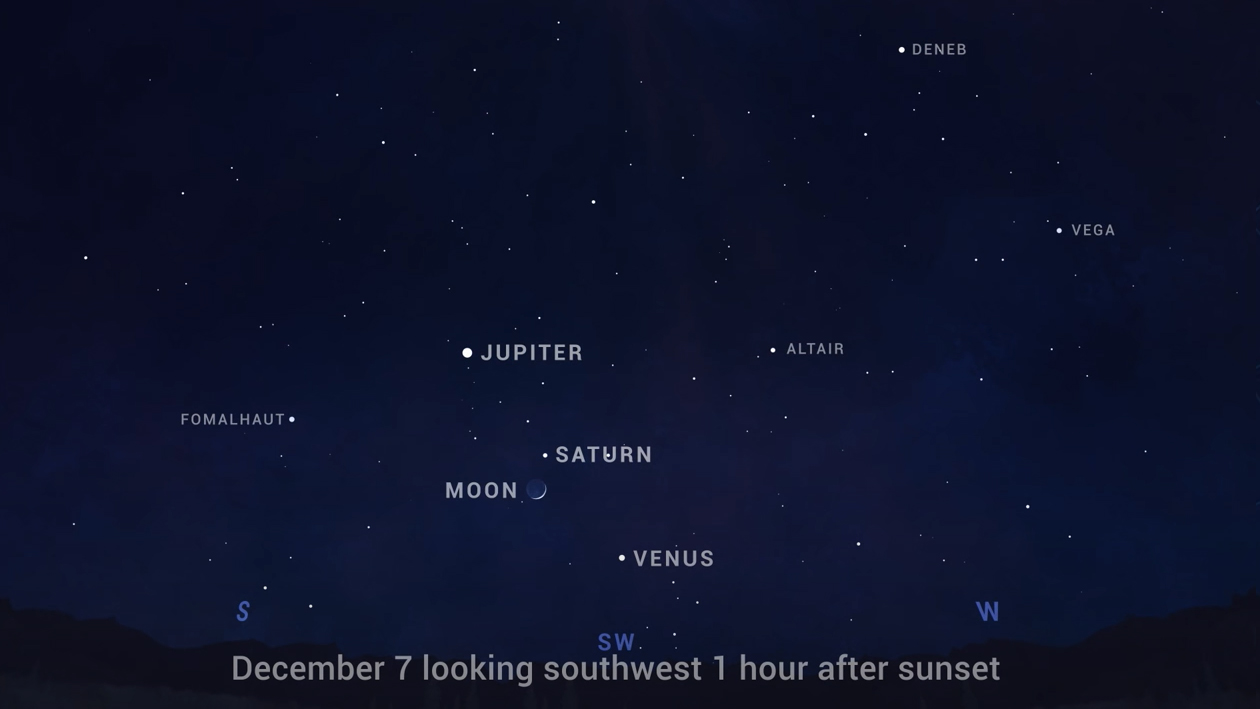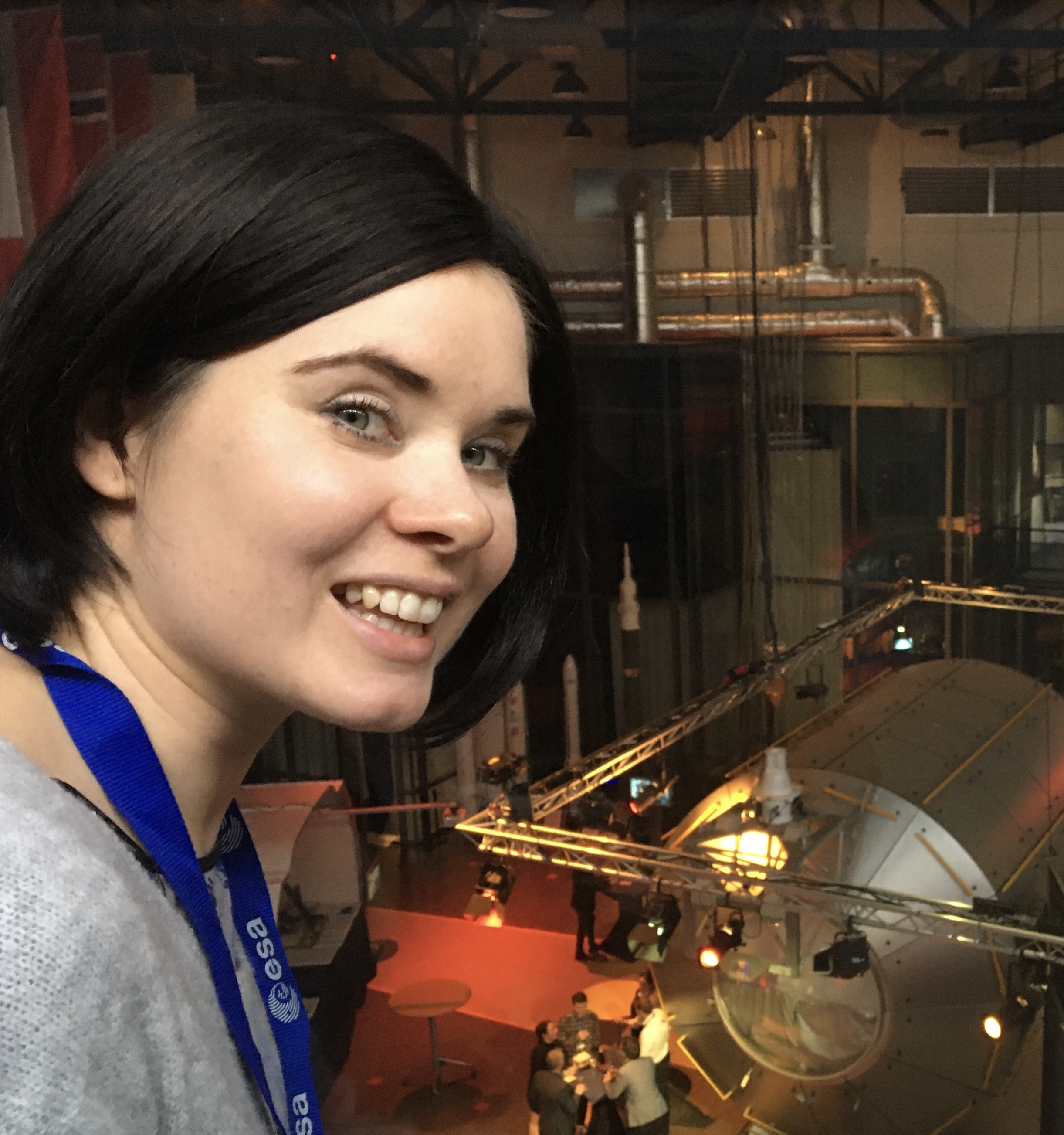See the moon near Saturn in the night sky tonight as Venus shines bright
See Venus, Saturn and Jupiter in the night sky before they disappear.

The moon is taking a tour of some of the brightest planets in the night sky this week and will shine near Saturn tonight (Dec. 6) with Jupiter and bright Venus also in view.
The waxing crescent moon will be visible from the Northern Hemisphere as it passes the ringed planet Saturn at dusk about one hour after sunset looking southwest, according to EarthSky.
Saturn will appear rather faint compared to its planetary siblings: the 'evening star' Venus, which is shining at its brightest this week, and the bright giant Jupiter. All three planets will adorn the evening sky like pearls suspended on a string in one diagonal line tilted towards the horizon at an approximately 45 degree angle. This line delineates the ecliptic plane of the solar system in which all planets orbit the sun as seen from our position on Earth, EarthSky said.
Related: Want to see Comet Leonard? Here are telescope and binoculars recommendations
Jupiter and Venus are the two brightest 'stars' in the December sky so the trio should be easy to spot.
As the waxing moon climbs up in the sky, appearing higher every day, it cruises past each of the planets. On Monday (Dec. 6), the Earth's companion visited Venus and it will pass Jupiter between Thursday and Friday (Dec. 8-9).
You can observe the moon, Saturn, Jupiter and Venus with your unaided eye, but if you want a clearer view, you may want to use binoculars or a telescope. Our guides for the best telescopes and best binoculars can help find the right instrument for you. If you're hoping to snap photos of the planets and moon, here's our guides for the best cameras for astrophotography and best lenses for astrophotography, and how to photograph the moon with a camera.
Breaking space news, the latest updates on rocket launches, skywatching events and more!
Venus, Jupiter and Saturn will be sliding down the sky towards the setting sun throughout the upcoming weeks, with Venus set to disappear below the horizon on January 9. The 'evening star' will reemerge in late January as the 'morning star', visible to early risers in the predawn sky.
This temporary disappearance is caused by the planet crossing the line between the sun and Earth. Jupiter and Saturn both have much larger orbits than Earth and cannot pass between our planet and the sun. They, too, will disappear in early 2022 as they move to the far side of the sun away from Earth.
Both planets will reach what astronomers call their superior conjunction in February and March respectively, when they will hide most directly behind the sun as viewed from Earth. After that, they will re-emerge in the pre-dawn sky, according to EarthSky.
Follow Tereza Pultarova on Twitter @TerezaPultarova. Follow us on Twitter @Spacedotcom and on Facebook.

Tereza is a London-based science and technology journalist, aspiring fiction writer and amateur gymnast. She worked as a reporter at the Engineering and Technology magazine, freelanced for a range of publications including Live Science, Space.com, Professional Engineering, Via Satellite and Space News and served as a maternity cover science editor at the European Space Agency.
